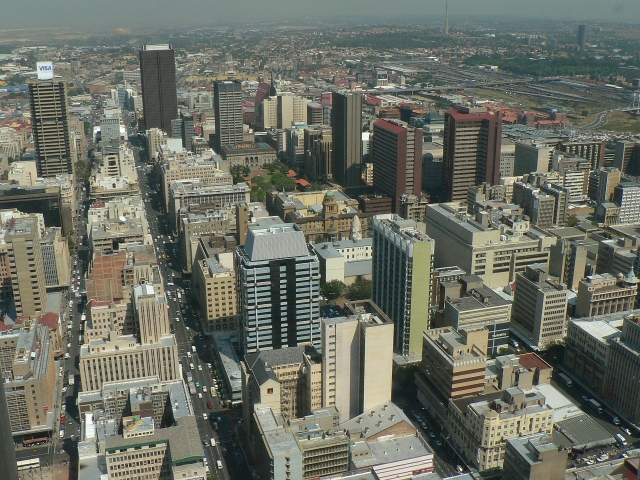
-
Expert Touches On Johannesburg’s Water Crisis As It Gets Worse
28 Feb 2024 by Tayla in Conservation, Environment, Lifestyle, South Africa, Tech/Sci
[imagesource:needpix]
Johannesburg can feel really dry.
As a Capetonian, as soon as I touch down at O.R. Tambo, I feel a tickle in my nose as my air pipes dry up and a constant need to apply lip balm on my almost cracked lips.
There is also hardly enough water to satiate my niggling dry throat. So I understand why Joburgers use more water than any other province in the country and 60% more than the global average. The average consumption in Gauteng is 279 litres per person per day, which is 27% more than the country’s average.
But Gauteng citizens using too much is not the sole reason why the region is struggling so much with water supply right now.
The infrastructure is shoddy, there are the usual leaks in budget, and ultimately the cities waste way too much and there is too much theft of drinking water. This is all outlined in a report by The Conversation Africa, with geography professor Craig Sheridan, director of the Centre in Water Research and Development at the University of the Witwatersrand explaining why taps keep running dry in South Africa’s biggest city.
Since late 2023, scarcely a week has passed without residents in this bustling commercial hub experiencing disruptions to their water supply. Notices of scheduled outages from the local water authority are now routine, alongside frequent instances of unforeseen water shutdowns. These disruptions have impacted all corners of the city, from shanty towns to both less affluent and more prosperous neighbourhoods.
Craig explains that water allocation for each province is based on the amount available in the dams (which must also supply future needs) and the number of people in that province.
The Vaal Dam is currently 70% full.
Rand Water, the area’s bulk water supplier, buys the water from the Department of Water and Sanitation, which gets the water from the Vaal to treat it to potable quality. It then sells the water to Johannesburg and Pretoria (and other cities and towns) which are in Gauteng. The cities sell the water to their residents through their distribution systems.
Basically, there is a mismatch between the water supply allocated by the national government and what’s needed on the ground, largely because the government is also thinking about future needs.
So there is a question about why more dams aren’t being built. Craig says this is the plan but the next phase (Phase 2) of the Lesotho Highlands Scheme is eight years behind schedule. The Lesotho Highlands Water Project is a multinational project to provide water to the Gauteng region of South Africa and to generate hydroelectricity for Lesotho.
Then there’s the fact that the City of Johannesburg is running its finances poorly.
The maintenance bill for water infrastructure is R2 billion (US$105 million) per year, but only R1 billion (US$52 million) is allocated. Maintenance needs are spiralling out of control. The city bills residents for rates, water, electricity, sewage and other services. However, the funds received are not ring-fenced. Other projects are competing for the same pot of money.
It doesn’t help that infrastructure is ageing – for example, in the suburb of Parkwood, the infrastructure is older than 70 years. When the pipes inevitably rust and break, they leak, and these leakages cost the water supply big time.
Repairs are obviously poorly done without sustainability or care in mind.
That means there is also the matter of non-revenue water, which is essentially water supplied by Rand Water that is “financially lost” through unauthorised consumption or water lost due to leakages.
Gauteng has non-revenue water of 49.2% (pages 25 to 27) – in other words, almost half the water that’s supplied to the cities in the province cannot be charged for (by the cities) because it forms part of the basic allowance, is lost through leaks or is stolen. By comparison, Denmark has non-revenue water of about 7%. Chile, also a country with variable climate, has urban non-revenue water of about 32%.
Basically, for every four litres provided to Gauteng by Rand Water, one litre is wasted through leakage (the city’s fault) and one litre is either given away for free (public good), stolen (the public’s fault) or not accounted for (much harder to allocate blame).
So yes, while Gautengers need to seriously consider their own water usage and how to reduce it, the authorities in the region also need to step up and allocate the correct and appropriate maintenance spend to fix and even renew the water network.
Until then, you might be treated to blue or rusty drizzle from your tap or nothing at all eventually.
[source:theconversation]
Latest News
-
Thai Woman Sentenced To Death For Murdering 14 Friends With Cyanide In Shocking Killing Spree
[imagesource: Sararat Rangsiwuthaporn] A woman in Thailand, dubbed 'Am Cyanide' by Thai...
-
René Magritte Painting Sells For Record R2.1 Billion At Auction
[imagesource:renemagritte.org] A René Magritte painting portraying an eerily lighted s...
-
Brave Rape Survivor Alison Botha Faces New Challenge After Brain Surgery
[imagesource: Alison Botha] Gqeberha rape survivor Alison Botha, a beacon of resilience...
-
Get Ready For The Mother of All Celebrations As MCQP Turns 30
[imagesource:mcqp/facebook] Clutch your pearls for South Africa’s favourite LGBTQIA+ ce...
-
The Iconic Good Hope Centre Is Set For Redevelopment
[imagesource:capetown.gov] The City of Cape Town’s Mayoral Committee has approved the...
-






























